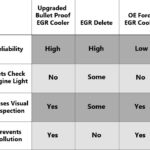Tcm Reprogramming, also known as Transmission Control Module reprogramming, is essential when replacing or rebuilding a transmission. This process involves updating the TCM with the correct Vehicle Identification Number (VIN) and calibration file to ensure proper communication and functionality with the vehicle. This article provides a detailed guide on two primary methods for TCM reprogramming for core transmissions.
Two Options for TCM Reprogramming
There are two main options for TCM reprogramming, each with its own set of procedures:
Option 1: Physical TCM Transfer
This method involves physically transferring the original TCM from the old transmission to the new or rebuilt one.
- Removal: Begin by removing the TCM from the existing transmission. This typically requires draining the transmission fluid (ensure you save it for later), removing the pan and filter, and unbolting the valve body. The TCM is usually connected to the valve body with a few bolts and a connector. Disconnect the connector carefully, lifting the lock before pulling.
- Installation: After removing the valve body, detach the TCM. Reverse this process to install the TCM onto the valve body of the rebuilt transmission. Remember to torque the T27 bolts to 58 inch-lbs and the T40 bolts to 89 inch-lbs.
- Refilling: With the TCM installed, carefully refill the transmission with the saved fluid. Use a small funnel and a vent plug to prevent spills and airlocks. A small pick or screwdriver placed between the funnel and the fill hole can help prevent airlocks.
Option 2: Software Reprogramming
This option utilizes dealer-level software to reprogram the TCM already present in the rebuilt transmission.
- Software Installation: Using compatible dealer software, install the correct VIN and the stock TCM calibration file matching the vehicle’s original specifications.
- Calibration: After the stock file is installed, the transmission can be calibrated to match the vehicle.
Essential Post-Reprogramming Procedures
Regardless of the chosen method, crucial steps must be taken after TCM reprogramming:
- Quick Learn and Adaptive Memory Reset: Perform a quick learn procedure and reset the adaptive memory to ensure the TCM learns the vehicle’s characteristics and adapts accordingly. This step is vital for optimal shifting performance.
- Verification: Before any performance tuning, drive the vehicle to confirm proper shifting and the absence of any diagnostic trouble codes (DTCs). This test drive ensures the reprogramming was successful.
- HP Tuners Credits: If using the existing TCM from a rebuilt transmission and intending to use HP Tuners for custom tuning, you’ll need to purchase four credits to access and modify the calibration file.
Conclusion
TCM reprogramming is a crucial aspect of transmission replacement or rebuilds. Whether opting for the physical transfer method or utilizing software reprogramming, following the correct procedures and performing the necessary post-reprogramming steps will ensure the transmission functions correctly and provides optimal performance. Remember to consult your vehicle’s service manual and utilize appropriate safety precautions when working on your transmission. Accurate TCM reprogramming contributes significantly to the overall drivability and longevity of your vehicle.
